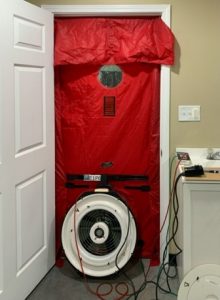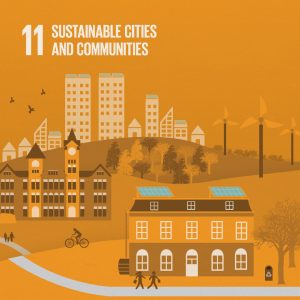By Betsy Farrell Garcia*
Extending the applied research in housing access and affordability conducted by faculty and students at Auburn University Rural Studio, the faculty-led Front Porch Initiative works with not-for-profit builder partners across the southeast offering housing products and technical assistance to build houses to beyond-code standards. As of 2023, all builder partners working with Front Porch Initiative are pursuing beyond-code standards of energy efficiency. The Front Porch Initiative team works with builder partners to tailor housing products to meet the needs of their client and their climate, adjusting each design to address energy efficiency, resilience, and healthfulness. One aspect of the team’s research involves the impact of energy efficiency on housing affordability.
When considering strategies to improve the energy efficiency of a structure, one might assume added insulation would be the easiest means of reducing energy costs. On paper, a higher R-value material provides more resistance to heat transfer (heat loss during cold weather, heat gain during warmer weather), making for a simple equation to calculate the building enclosure’s idealized properties. However, in practice, an often-overlooked performance consideration is the efficacy of a building’s air barrier, both as material and quality of installation. Surprisingly, air infiltration is a significant source of energy loss among residential buildings; the US Department of Energy estimates air infiltration is responsible for energy losses of 30% or more. Therefore, reduction of infiltration can be equally as important as insulation.

Percentage of heating loads for small single-family house (Auburn University Rural Studio)
Reduction of infiltration is achieved through an element of the building enclosure called the air barrier. An air barrier limits the amount of air entering or leaving a building through cracks or gaps. Preventing air infiltration from the exterior is of critical importance since that air can carry dirt, moisture, and pollutants; gaps permit pests to enter; and drafts reduce thermal comfort of occupants. An airtight building enclosure prevents mold growth within the wall assembly, improves occupant comfort, increases longevity of building materials, and protects indoor air quality, leading to improved health outcomes.

Blower door equipment
(Auburn University Rural Studio)
The leakiness of the building enclosure, or building envelope, can be tested using equipment called a blower door. Testing the building envelope involves depressurizing the house with a fan mounted in a doorway and measuring the pressure differential generated between interior and exterior. When considered relative to the conditioned volume of the house, this pressure can be used to calculate the number of times per hour that the air in the house is fully replaced with fresh air. In houses where construction ensures a tight envelope, the interior air will be exchanged only one or two times per hour. Ventilation air for occupants is then introduced in a controlled manner, ideally through equipment that filters incoming air and recaptures energy from exhaust air.
While a blower door test is required at the completion of a project to pass the final building inspections, the test can also be utilized mid-construction to detect leaks while they can still be rectified. If conducted before installing the interior finish, sealant can be added at material junctions and around openings such as electrical boxes, pipe penetrations, doors, and windows. These simple steps can improve the performance of the heating, cooling, and ventilation systems significantly by reducing air lost to the exterior, and with it, the energy used to condition that air.
Through ongoing research with builder partners, Front Porch Initiative recognizes upgrading a building’s energy performance is not simply a matter of selecting more advanced and efficient materials. Improved performance is also dependent on careful detailing and construction methods to maintain an airtight envelope, steps frequently achievable at a lower cost, a critical advantage when investing limited resources in improving energy performance.
*Betsy Farrell Garcia is an Assistant Research Professor with Auburn University Rural Studio, and a November 2022 recipient of the Sustainability Professional Development Sponsorship Award.
Learn about the SDGs & AU and our contributions related to this post.





